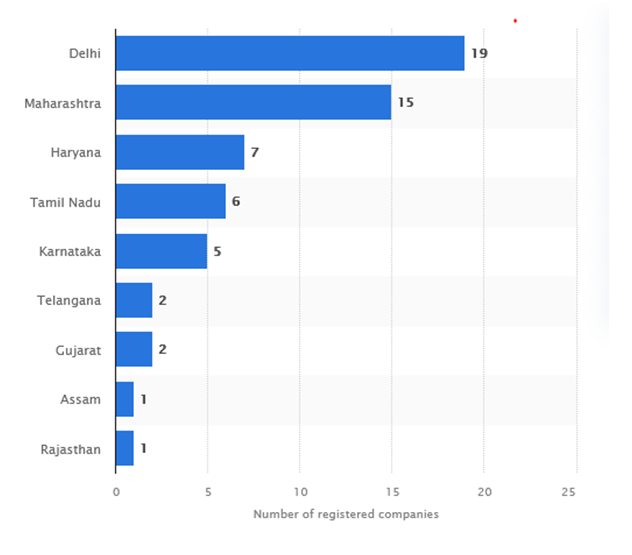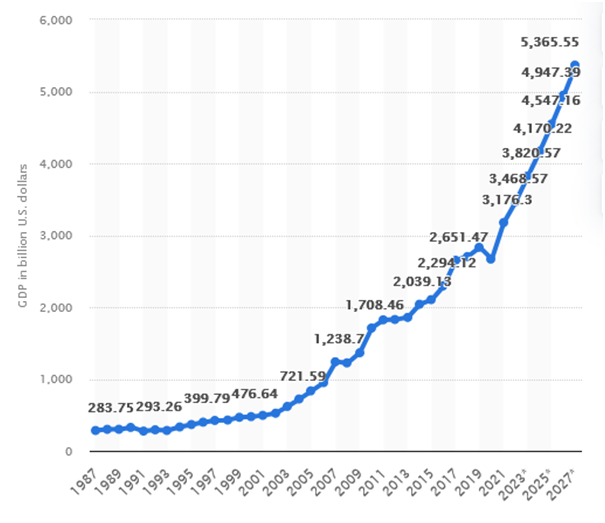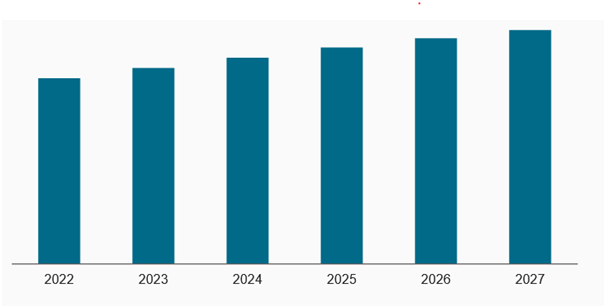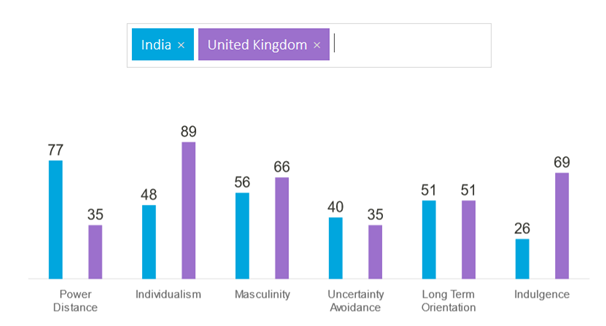Global business assignment on market entry strategies of Hovis Bakery in India
Question
Task: Choose an SME and provide an analysis of critical environmental factors and their impact on internationalisation process in your global business assignment.Justify- why this SME needs to expand? What are the critical threats in domestic market and/or opportunities in foreign market – discuss most critical factors only.Discuss why the understanding of the foreign macro -economic environment is essential and challenging for a business looking to expand.Evaluate different internationalisation options under the current external conditions.Recommend the best option for the SME to expand to the foreign country you have chosen.
Answer
1.Introduction
1.1 Organization Background
Hovis Bakery UK is a baking business under the ownership of Endless LP. The company is located at High Wycombe consisting of around 2800 employees in eight bakeries, three distribution centres and our flourmill across the UK (Hovis, 2022). It has been operating for more than 130 years and offering around a million loaves everyday around the UK and Ireland markets. Other products under this brand are Mother’s Pride, Ormo and others. It is found from the global business assignment that Hovis provides high quality and tasty bakery products to the customers by baking them following the tradition of the company.
1.2 Reasons behind Expansion explained in the global business assignment
The purpose of the global business assignmenthere is to determine market entry strategies of Hovis, UK that intends to enter the Indian market.It has become essential for firms to engage in international operations to ensure their long-term growth and survival in this competitive business environment. As per the global business assignment this Hovis needs to expand its business operations into a new market. Here, some of the push factors in the UK market that makes expansion crucial are its high tax rate, increased labour and raw material costs and high interests on business loans. India is a suitable market for the company because of favourable factors like cheap labour and high disposable income of customers.
2. Analysis of Critical Environmental Factors and Impact on Internationalization Process
2.1 Political and Economic Environment discussed in the global business assignment
Hovis, UK must analyse the political and economic environment of India before expanding into its market.Political power in India is divided amongst the centre and the states on different legislative and executive matters (Gov.UK, 2021). As per the global business assignment this provides the states with adequate policy autonomy on various subjects. India also maintains tactful relations with various countries in the world supported by its large political network (Gov.UK, 2021). This enables it to attract foreign businesses to expand their operations in the country. Experts display a sense of optimism about India’s growth. This is mainly because of its political stability, government’s continued efforts for improving things and consistent policy reforms (Bhasin, 2022). These have contributed towards the pace of improvement in the country. This can be beneficial for Hovis to expand its operations in the UK market. However, it is found from the global business assignment that it can also face difficulties as the Monetary Policy Committee of Reserve Bank of India has begun with the process of increasing interest rates for curbing inflationary pressures on the economy (Bhasin, 2022). These high interest rates remain still below the ones present in the UK market. This indicates that the foreign company might not experience much hardships in acquiring business loans in this country. Moreover, Delhi, Maharashtra, Haryana and Tamil Nadu are some of the states and union territories with the highest amount of listed foreign companies across India (Appendix 1 to the global business assignment). Here, Hovis can focus on entering any of these regions at first for expanding its operations.
India is expected to become the third largest economy of the world by the year 2027. This is because of the increasing global movements and significant investments made by the country in both technology and energy (Morgan Stanley, 2022).As per the global business assignment data it is also the fastest growing economy in the world accounting for 5.5% average growth in gross domestic product (GDP) in the last decade. The country is about to experience unprecedented economic growth in the coming years because of digitalization, global offshoring and energy transition(Morgan Stanley, 2022). It is gaining power in the world economy and the idiosyncratic changes are expected to provide more opportunities to foreign investors and companies. India has shown rapid progress towards a free-market economy, thereby contributing towards its continued development in the past few decades (Appendix 2 to the global business assignment). Thus, this shows a favourable economic climate for Hovis Bakery to enter the Indian market by leveraging this economic growth.
2.2 Competitive Rivalry
In 2021, the Indian bakery market accounted for a value of US$ 10.2 billion. It is further expected to reach around US$ 19.3 billion by the year 2027 with a project CAGR 10.94% during the years 2022-2027 (IMARC, 2022).It is found from the global business assignment that the increasing demand for bakery products in India accelerated by the growing population further results in increased attractiveness of the market. Here, enhancing consumption of breads, biscuits and fast-moving consumer goods has also been contributing towards the growth and attractiveness of this industry (Appendix 3 to the global business assignment). Furthermore, bakery industry is one of the principal segments of the Indian food processing sector, which offers various opportunities for businesses, growth, job generation and innovation (FI Global, 2022). India has become a key player being the second largest producer of biscuits, which further provides opportunities for bakery companies operating locally and internationally. Indian bakery sector comprises of more than 2000 organized or semi-organized bakeries while around 1,000,000 unorganized bakeries. This enhances competition amongst the brands operating in this industry (FI Global, 2022). Here, bakery companies often face other challenges like lack of operational efficiency, inadequate technology and absence of skilled workers. Thus, this can further create difficulties for Hovis apart from the competitive intensity in the market.
As per the global business assignment according to 2015 Statista reports, India comprised of more than 1600 bakery products processing units. In that same year, it was estimated that the market consisted of around 36,600 registered food processing industries overall (Statista, 2022b). This indicated that the bakery processing units in India comprised of a major part of the food processing sector, thereby making it crucial for employment in the Indian economy. The large number of local and regional bakery processing companies enhances the competitive intensity in the Indian market. Some major players operating in this industry are Britannia, ITC, Parle Products, Surya Food & Agro Ltd and Modern Food Industries (PR Newswire, 2014). These brands provide breads alongside other bakery items to the Indian customers. It is found from the global business assignment that the Indian bakery brands make constant efforts for innovating and improving their product quality for matching up with the changing consumer preferences and increased consumption boom in the nation. This further intensifies the competitive rivalry amongst the firms. It has also been observed that at least 10 bakery outlets are present within a 1km stretch in India, which fosters a healthy competition amongst the bakery companies (FNB News, 2019). Thus, big firms constantly compete with each other for gaining increased market share alongside the small outlets engaging in healthy competition.
2.3 Power Distance between Cultures
This is one of the six dimensions of Hofstede cultural model. Power distance refers to the degree of less powerful members accepting and excepting unequal distribution of powerpresent in a society or organization (Kristjánsdóttir, et al., 2017). As per the global business assignmentIndia has a high score in this dimension, which shows that hierarchical and top-down structure is prevalent in both society and organizations. In a business context, employees depend on their boss for directions and accept unequal rights based on this top-down structure (Hofstede Insights, 2022). Directions flow from the top management to the lower level of employees and these employees are also expected to follow such orders. Furthermore, it is found from the global business assignment that Indian businesses mainly comprise of paternalistic leaders and management provides meaning to work life and rewards to the employees by demand loyalty from them. Besides, centralized decision-making is observed in this culture where managers expect obedience from the team members (Thampi, Jyotishiand Bishu, 2015). As per the global business assignment this often prevents employees from speaking their minds or expressing opinions, viewpoints or concerns. Moreover, the high-power distance between leaders and employees also makes it difficult for the latter to communicate with their superiors. Employees further receive clear directions about their roles, responsibilities and expectations from them in the organization (Juhasz, 2014). Managers exert control over the employees along with a formal approach towards psychological security and attitudes of the employees. In addition, Indian businesses foster top-down and directive communication, which further disregards negative feedback from the employees.However, UK has a significantly low score in power distance index, which displays that the society believes in minimizing inequalities amongst people (Hofstede Insights, 2022). There exists a sense of fair play in the organizations as well where employees are treated as equals with their superiors. As per the global business assignment findings, there are very few management positions in British business context, which leads to more flexibility, less supervision of employees and involving them in business operations. This creates striking difference with the business culture present in India. Furthermore, British managers prefer creative freedom and expects employees to provide valuable inputs in crucial matters (Euro Start Enterprises, 2021). This can lead to potential conflicts for Hovis while operating in India as those employees would expect clear directions and orders from their British managers. As per the global business assignment in British culture, employees are also expected to work with significant autonomy, accountability and control, which can further make it difficult for Hovis expatriates while working with Indian managers.
3. Entry Mode Evaluation in the global business assignment
3.1 FDI: Advantages & Disadvantages
Hovis Bakery can undertake this entry strategy of foreign direct investment (FDI) for venturing into the Indian market. FDI refers to the process of investing funds from one country into another for establishing lasting interest (Jonesand Wren, 2016). It takes place when an investor or organization engaging in a foreign business operation or acquiring a business asset in a foreign market.As per the global business assignment this strategy can enable Hovis Bakery to have full control over daily activities alongside resulting in transfer of knowledge, skills and technology and gaining access to new customers (Bediand Kharbanda, 2014). However, disadvantages of FDI in India are weak infrastructure, complicated tax structure, bureaucracy, corruption and regulations and restrictive labour laws.
3.2 Joint Venture:Advantages & Disadvantages
Hovis Bakery can also enter into a joint venture with a local food processing unit in India for pooling resources, reducing its costs, combining expertise and accomplishing the business objectives.As per the global business assignment the company can gain various advantages through this strategy like accessing new markets, using partner’s supply chain and distribution networks, enhancing capacity, sharing of risks, accessing new knowledge,sharing costs with partner, expertise and skills and gaining more resources (Yanand Luo, 2016). However, disadvantages of this strategy include cultural differences, communication issues, different expectations and management styles, lack of effective leadership, unequal distribution of work and resources.
3.3 Exporting: Advantages & Disadvantages
Hovis can consider exporting strategy for offering its products and services to the Indian customers. The firm can gain advantages like expanding market share being less dependent, larger economies of scale and improved margins and utilization of research and development budget (Paul, Parthasarathyand Gupta, 2017). However, it is found from the global business assignment that it can also face issues like losing focus and customers in home markets, managing remote relationships, lack of control, failure to understand foreign customers and increased administrative costs.
4. Recommendations
From the evaluation of different entry mode strategies, it is suggested that Hovis Bakery can select the joint venture strategy for entering the Indian market. This strategy mentioned in the global business assignmentwould help the firm in better responding to the external challenges of political and economic intricacies, intense competition and striking cultural differences. Hovis can partner with a local food firm and use its knowledge, skills and expertise for understanding the Indian market, its customers’ tastes and preferences and competitors’ offerings. Joint venture would also be beneficial in overcoming the difficulties arising from cultural differences, thereby helping Hovis to reach potential customers through effective marketing strategies. As per the global business assignment the UK firm can also leverage the distribution network of the Indian firm to build its relationships with suppliers. It can also use its skills and expertise for understanding the customers and accordingly, offering the products and services. Thus, joint venture would be a more suitable market entry strategy for Hovis Bakery in the Indian market.
5. Conclusion
The global business assignmentaimed at determining the appropriate market entry strategy for Hovis Bakery, UK willing to enter the Indian market. The Indian market was chosen because its high disposable income, expected economic growth, low tax rates and profitability of the industry. Here, three external factors, namely, political-economic environment, competitive rivalry and power distance were chosen for analysing the Indian business environment. It was found out from theglobal business assignmentthat despite political and economic stability in India, there is high competitive rivalry and significant cultural differences with UK based on power distance index. Lastly, analysing three modes of entry, it was suggested that joint venture would be most suitable for the UK firm.
6. Reference
Bedi, P. and Kharbanda, E., 2014. Analysis of inflows of foreign direct investment in India-problems and challenges. Global Journal of Finance and Management, 6(7), pp.675-684.
Bhasin, K., 2022. View: India growth story finds its basis in political stability and consistent policy reforms. [online] The Economic Times. Available at:
Euro Start Enterprises, 2021. 7 key differences between European and Indian business culture. [online] Available at:
FNB News, 2019. “Indian bakeries face healthy competition with good share of business”.[online] Available at:
Gov.UK, 2021. Overseas Business Risk – India. [online] Available at:
Hofstede Insights, 2022. Countrycomparison. [online] Available at:
IMARC, 2022. Indian Bakery Market: Industry Trends, Share, Size, Growth, Opportunity and Forecast 2022-2027. [online] Available at:
Jones, J. and Wren, C., 2016. Foreign direct investment and the regional economy. Routledge.
Juhasz, I., 2014. The workforce in Indian organizations: an analysis based upon the dimensions of Hofstede’s model. Economics Questions, Issues and Problems, 1, pp.38-45.
Kristjánsdóttir, H., Guðlaugsson, Þ.Ö., Guðmundsdóttir, S. and Aðalsteinsson, G.D., 2017. Hofstede national culture and international trade. Applied Economics, 49(57), pp.5792-5801.
Morgan Stanley, 2022. India’s Impending Economic Boom. [online] Available at:
Paul, J., Parthasarathy, S. and Gupta, P., 2017. Exporting challenges of SMEs: A review and future research agenda. Journal of world business, 52(3), pp.327-342.
PR Newswire, 2014. Bakery Industry in India (Bread, Biscuits and Other Products) Present & Future Prospects, Market Size, Statistics, Trends, SWOT Analysis and Forecasts (Upto 2017).[online] Available at:
Statista, 2022a. Number of registered foreign companies in India FY 2022, by state. [online] Available at:
Statista, 2022b. Number of registered bakery products processing units India 2007-2015. [online] Available at:
Thampi, P.P., Jyotishi, A. and Bishu, R., 2015. Cultural characteristics of small business entrepreneurs in India: examining the adequacy of Hofstede's framework. International Journal of Business and Globalisation, 15(4), pp.475-495.
Yan, A. and Luo, Y., 2016. International Joint Ventures: Theory and Practice: Theory and Practice. Routledge.
7. Appendix
Appendix 1: Number of registered foreign companies across India in financial year 2022, by state and union territory

(Source: Statista, 2022a)
Appendix 2: India: Gross domestic product (GDP) in current prices from 1987 to 2027

(Source:O’Neill, 2022)
Appendix 3: Indian Bakery Market Size, 2022-2027 (in US$ Billion)

(Source: IMARC, 2022)
Appendix 4: Hofstede Insights: Country Comparison

(Source: Hofstede Insights, 2022)












